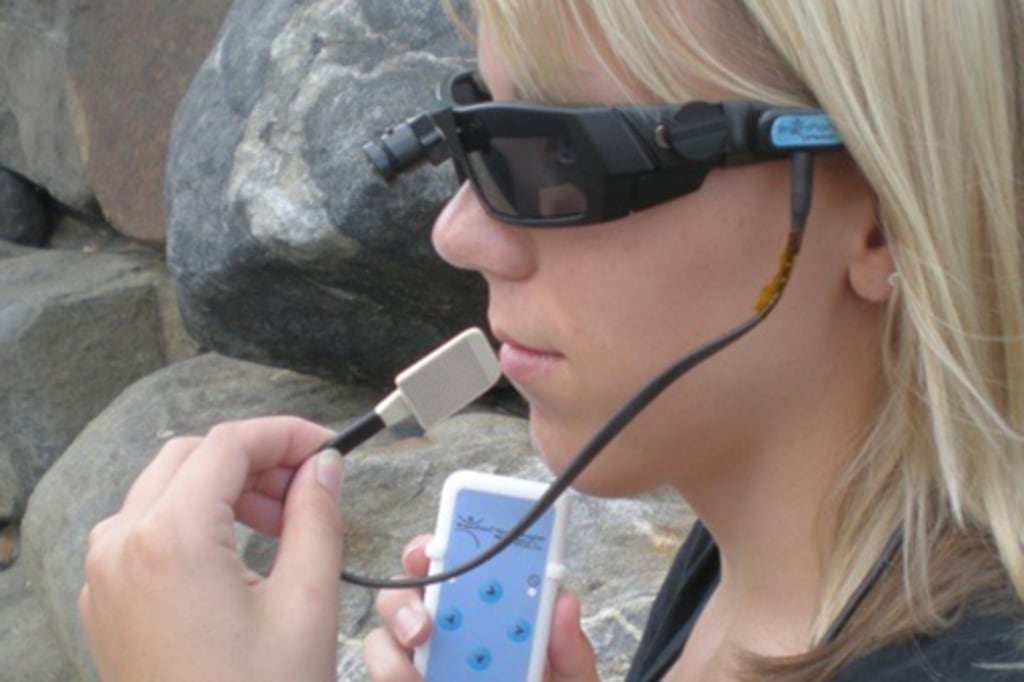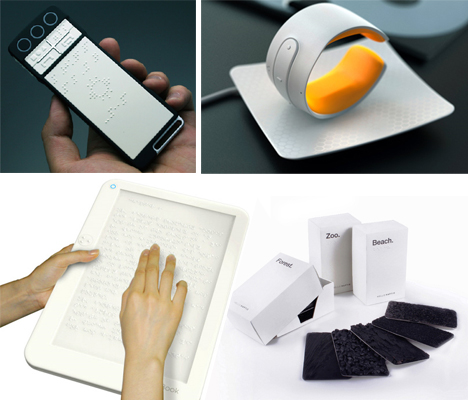AI-Powered Visual Aids: Enhancing Autonomy for Blind Users
AI-Powered Visual Aids: Enhancing Autonomy for Blind Users
Blog Article
Empowering Freedom With Assistive Modern Technology for the Blind
The assimilation of assistive innovation into the lives of individuals with aesthetic problems represents a substantial improvement in promoting self-reliance and self-sufficiency. From innovative display visitors to advanced smart walking canes, these devices not only improve everyday navigating and interaction however likewise encourage customers to involve meaningfully in different elements of life. As we explore the myriad advantages and real-world applications of these technologies, it ends up being vital to analyze the underlying factors that add to their performance and the capacity for future developments in this vital area.
Introduction of Assistive Technology
The development of assistive modern technology is grounded in principles of inclusivity and empowerment. Innovations in software program, hardware, and sensory improvements supply customers with choices customized to their certain requirements. From screen readers that transform message to speech, to responsive tools that share info through touch, these tools change the means people engage with their surroundings.
In enhancement to practical applications, assistive innovation fosters higher social addition and engagement in numerous fields, consisting of education and learning and employment (Screen readers for the blind). As r & d remain to develop, the possibility for assistive innovation to further enhance the lives of visually damaged individuals remains appealing, leading the way for an extra equitable culture where every person can prosper
Types of Assistive Gadgets
A selection of assistive gadgets have arised to sustain people with aesthetic problems, each created to meet specific requirements and enhance day-to-day functioning. These devices vary from low-tech solutions to high-tech technologies, supplying diverse alternatives for users.
Low-tech devices consist of magnifiers and large-print products that assist in reading and writing. Braille tools, such as Braille stylus pens and slates, make it possible for tactile reading and interaction. Alignment and wheelchair aids, like white walking canes, assist customers navigate their setting safely.
On the greater end of the spectrum, electronic magnifying systems and screen readers use considerable assistance. Electronic magnifiers enable customers to enlarge text and pictures on displays, while display viewers convert digital material right into manufactured speech, helping with access to info on mobile phones and computer systems.
Mobile phone applications additionally play an essential function, supplying attributes like text recognition and navigation support. Wearable technology, such as wise glasses furnished with increased fact, is emerging as a promising tool to boost situational awareness.
Advantages of Assistive Modern Technology
The assimilation of assistive technology dramatically enhances the top quality of life for people with visual disabilities. These innovations encourage individuals by advertising self-reliance, allowing them to browse their atmospheres better and perform day-to-day tasks with higher simplicity. As an example, display viewers and magnifying software allow order glasses individuals to gain access to digital info, promoting professional and instructional opportunities that may have previously run out reach.
Moreover, assistive gadgets such as wise walking canes and general practitioners applications give real-time navigating aid, improving wheelchair and safety. This boosted freedom not only boosts self-esteem however also motivates social involvement, permitting users to get involved even more totally in their neighborhoods.
Assistive modern technology also promotes communication, helping customers get in touch with others through voice acknowledgment and text-to-speech applications. This capability is crucial for maintaining connections and accessing critical info.
Furthermore, the customization alternatives available with lots of assistive innovations ensure that users can tailor tools to their particular needs, better improving use and effectiveness. Generally, the advantages of assistive modern technology for individuals with aesthetic impairments are profound, advertising a more inclusive society where everybody can seek their ambitions and objectives.
Instance Research Studies and Success Stories
Highlighting the transformative impact of assistive technology, countless instance research studies illustrate how people with aesthetic disabilities have actually effectively incorporated these tools into their day-to-days live. One compelling instance involves an university student that utilized screen analysis software to browse online resources and scholastic materials effectively. This modern technology not only promoted her education and learning but additionally enhanced her confidence in taking part in discussions and group tasks.
An additional study features a professional that uses a mobile phone application designed for navigation and object acknowledgment. By utilizing this application, he has actually reclaimed autonomy in both his individual and work settings, allowing him to commute independently and engage with coworkers more successfully.
Additionally, a retiree shared her experience with braille e-readers, which enabled her to access a huge selection of literature and stay linked with her neighborhood through book clubs.
These success tales emphasize the important duty of assistive modern technology in fostering independence, boosting lifestyle, and advertising social integration for people with aesthetic impairments (OCR devices for the blind). By embracing these innovative tools, customers can get rid of obstacles and confiscate possibilities that add to their specialist and personal satisfaction

Future Patterns in Assistive Modern Technology
Technology in assistive innovation is poised to redefine the landscape of assistance for individuals with visual disabilities. Arising fads emphasize the assimilation of artificial intelligence (AI) and machine learning, which enhance the performance of More Bonuses tools that assist with navigation and info ease of access. AI-driven applications are now capable of analyzing visual information in real-time, allowing users to involve with their environment extra separately.
Moreover, the development of wearable innovation is progressing swiftly. Smart glasses equipped with enhanced reality (AR) can offer audio summaries of surroundings, transforming just how individuals engage with public areas. These gadgets not just promote autonomy however additionally foster social incorporation.
Furthermore, the Web of Points (IoT) is making homes smarter, enabling smooth connection between day-to-day appliances and assistive devices. This connectivity equips customers by making it possible for automated reactions and voice-activated controls tailored to private needs.
Conclusion
To conclude, assistive technology plays a critical function in equipping people with visual impairments by boosting their freedom and click this engagement with their surroundings. The varied array of gadgets and applications offered not just assists in navigating and communication yet also advertises social integration and chances for personal and professional development. As developments proceed in this field, the potential for enhancing the lifestyle for those with aesthetic impairments will certainly broaden, promoting greater autonomy and empowerment.

Report this page